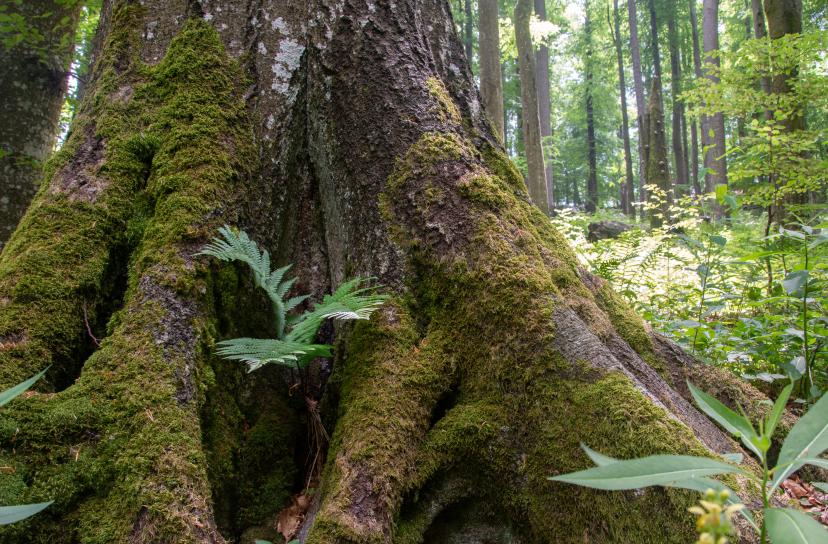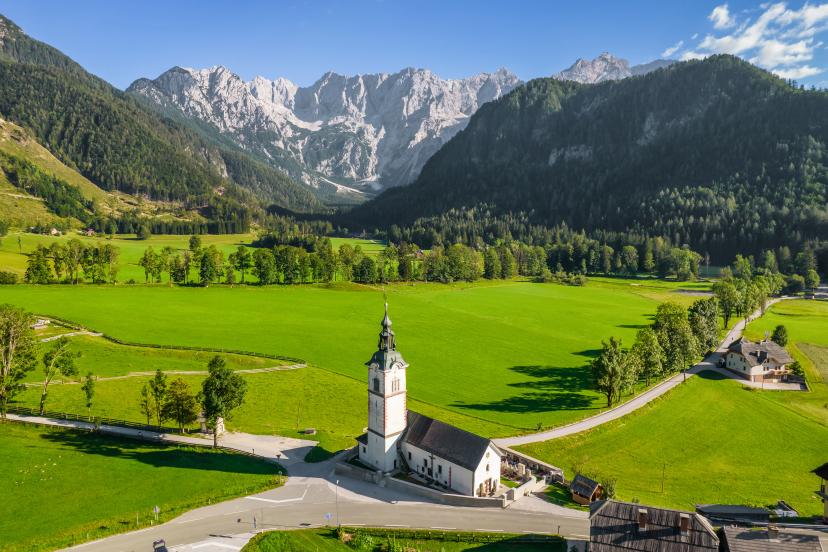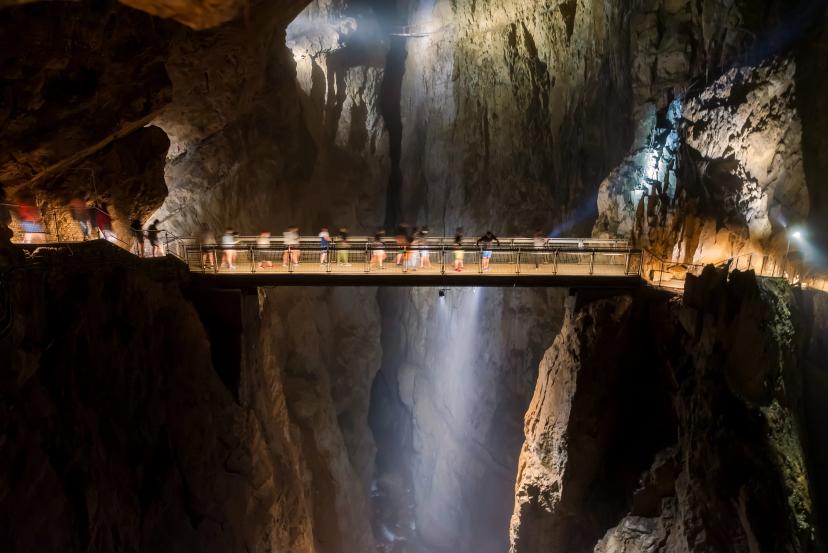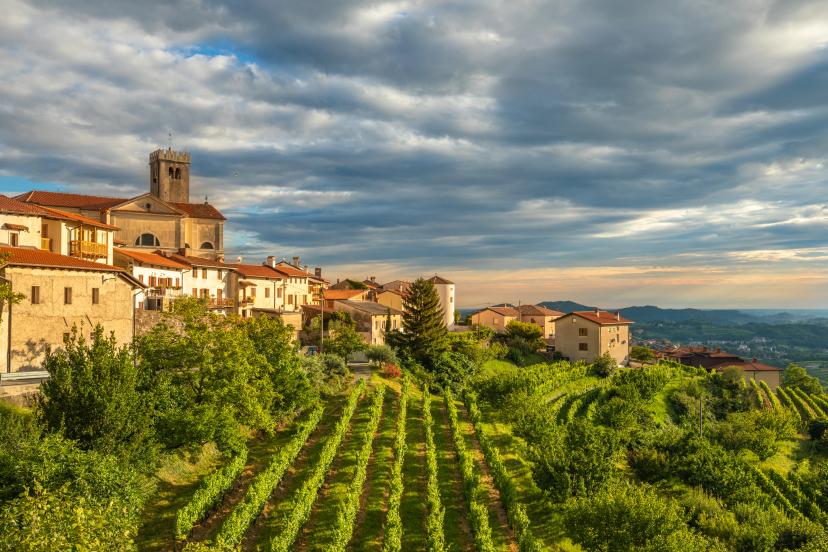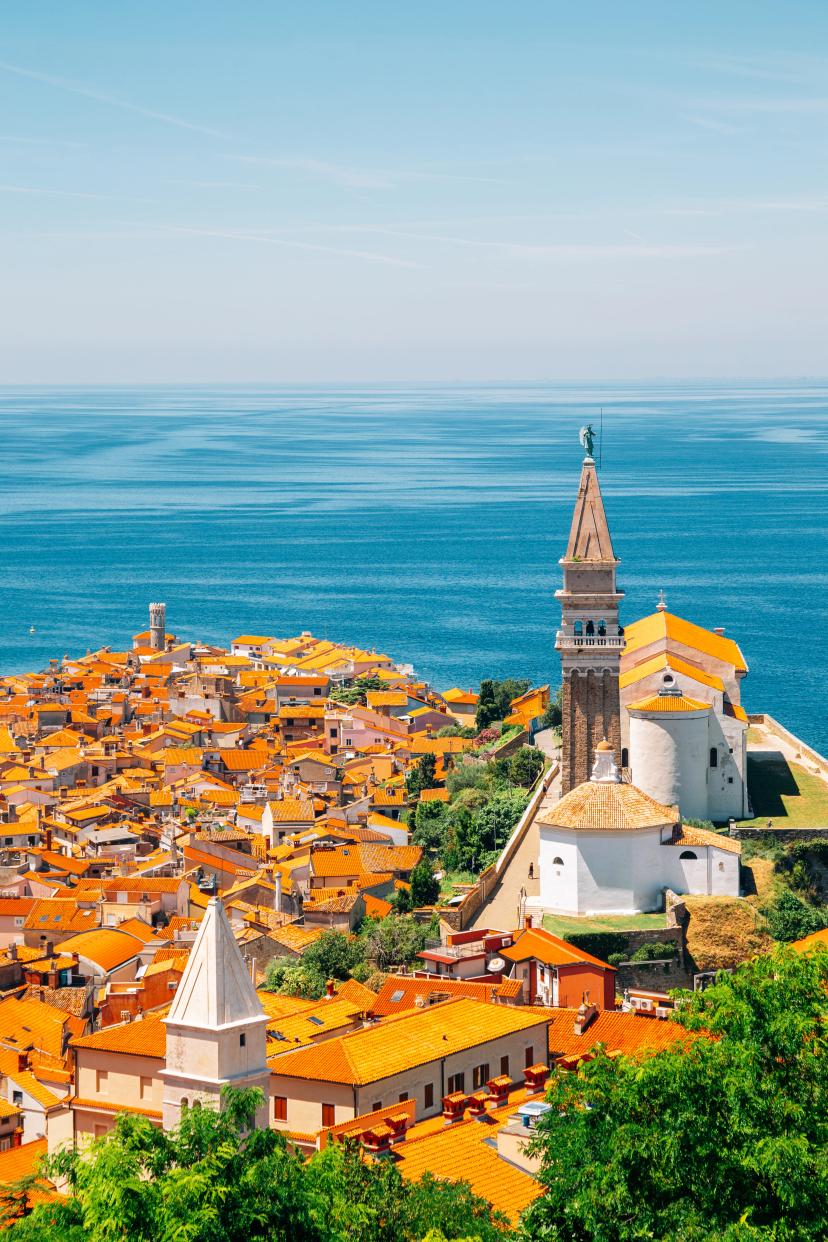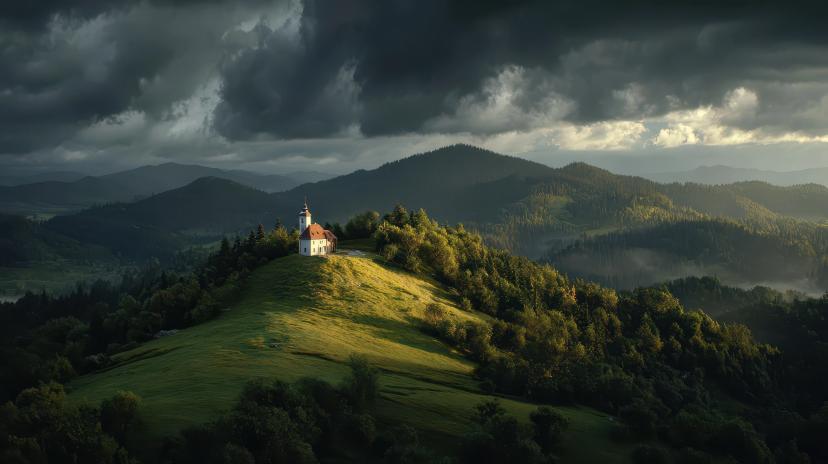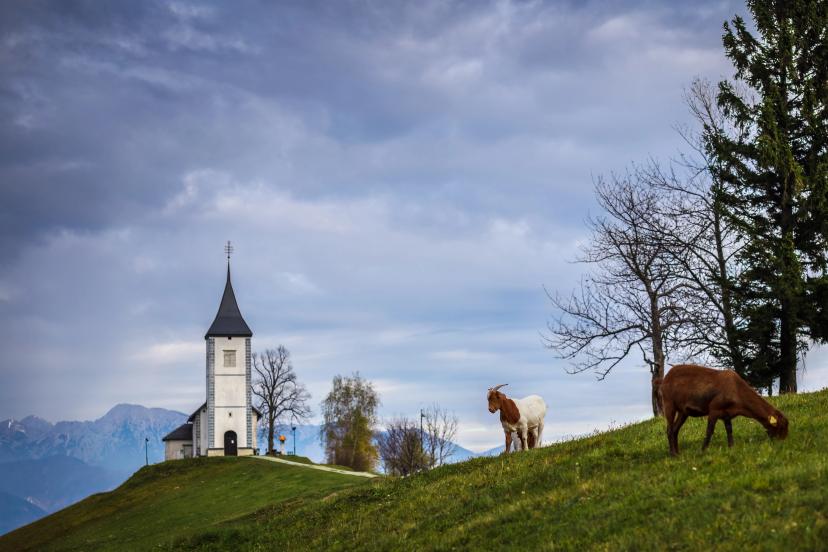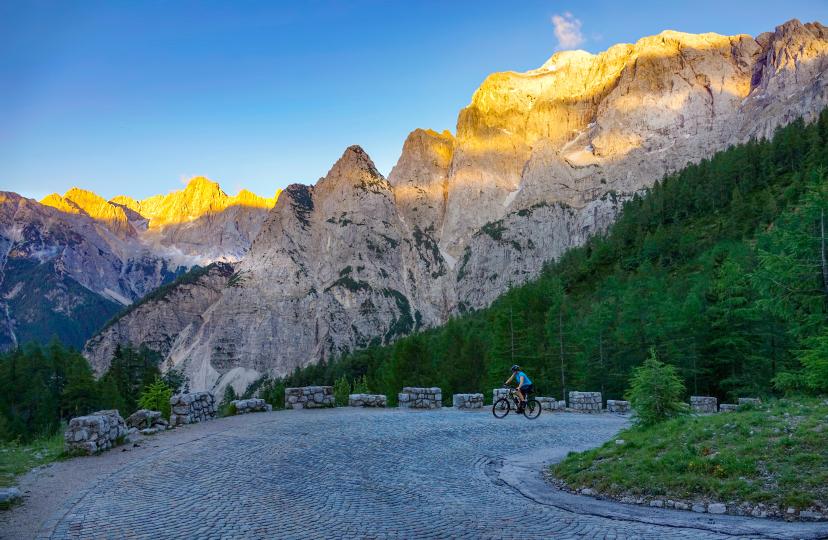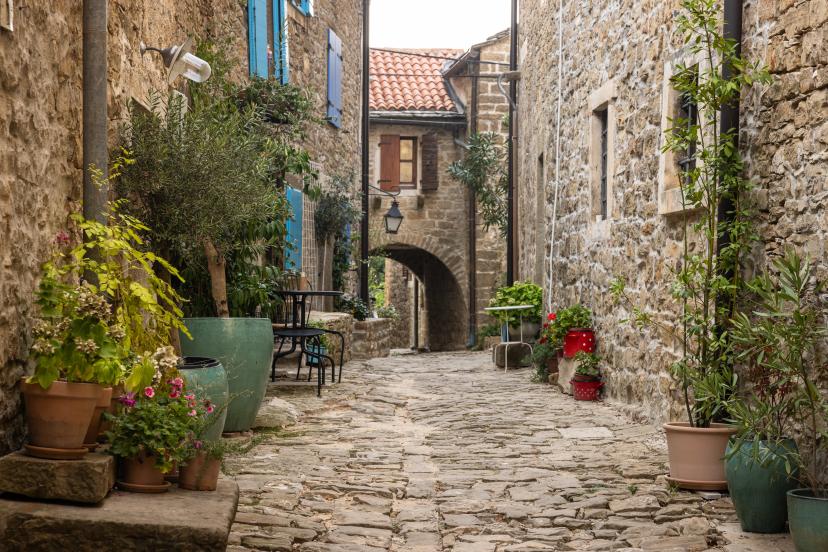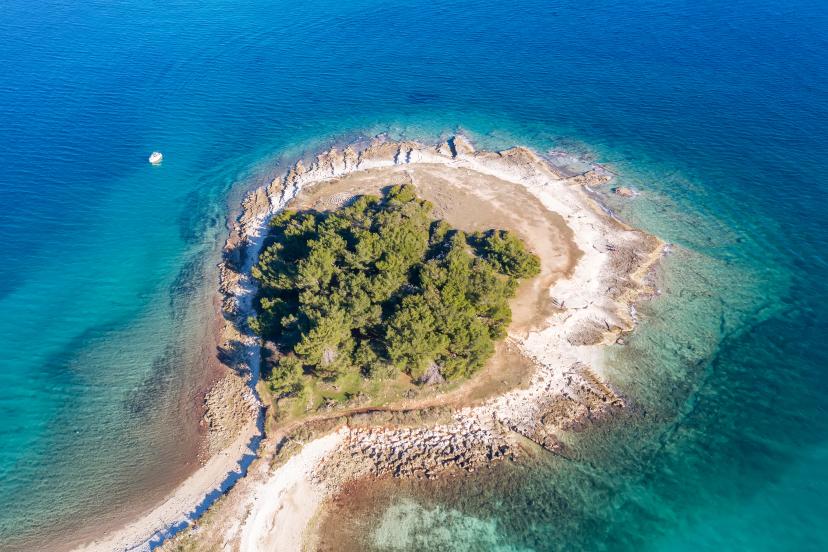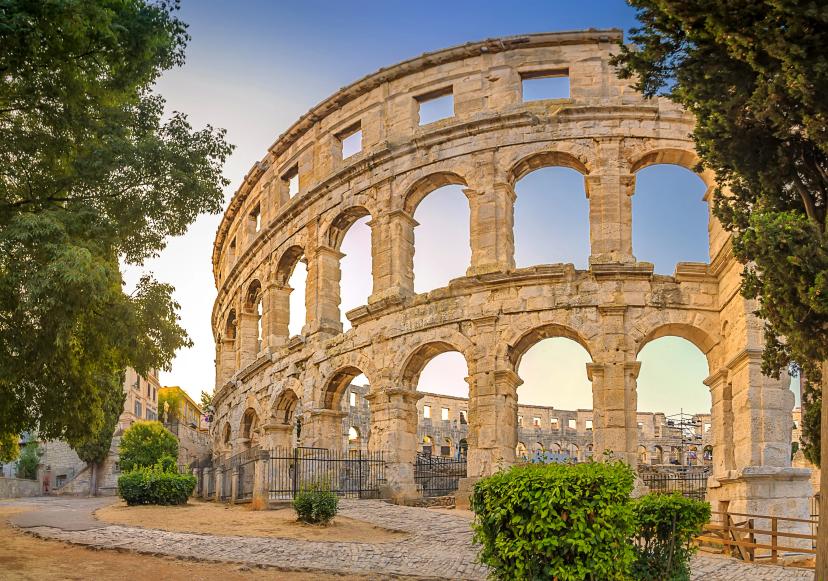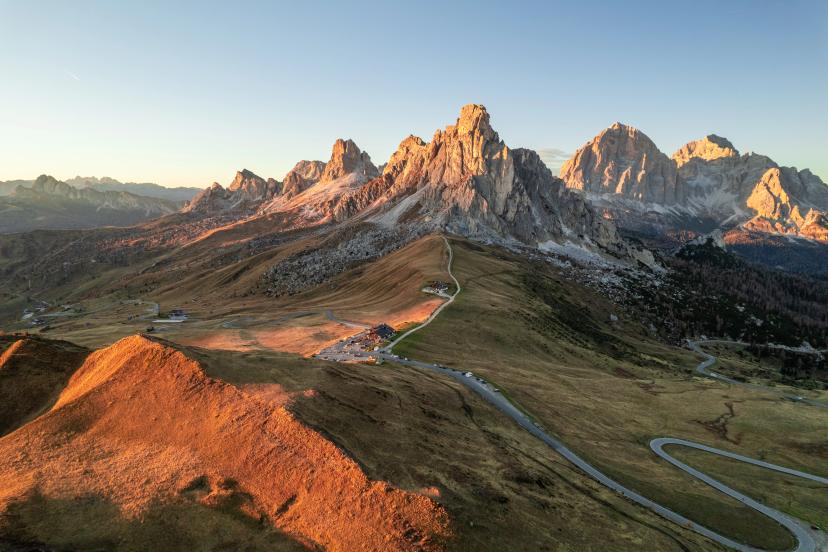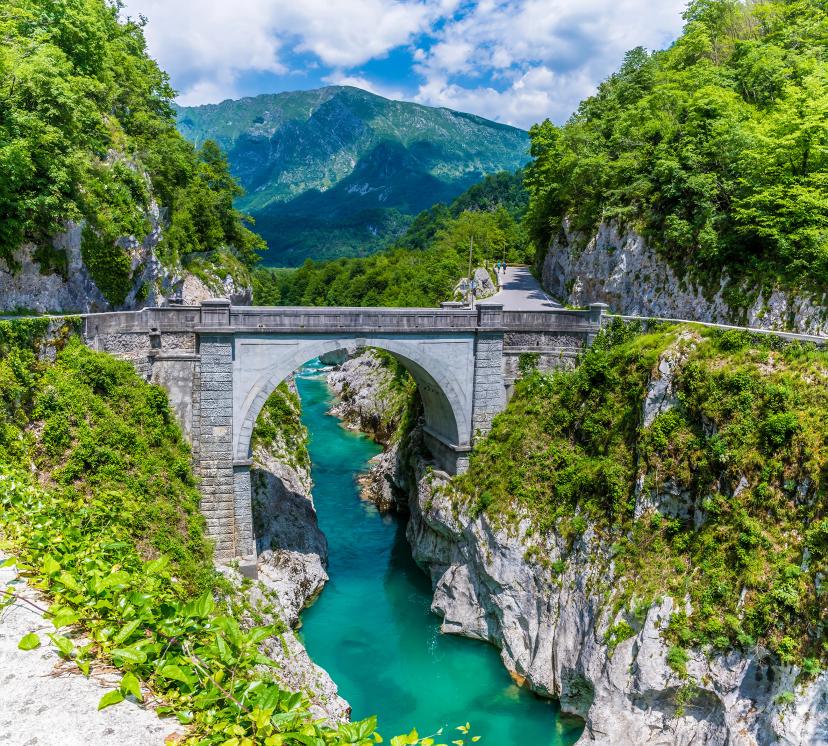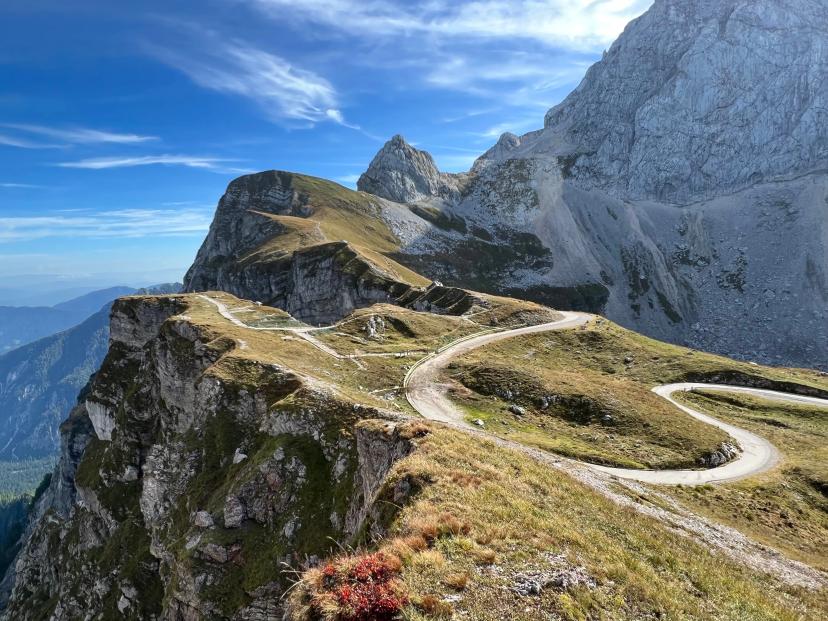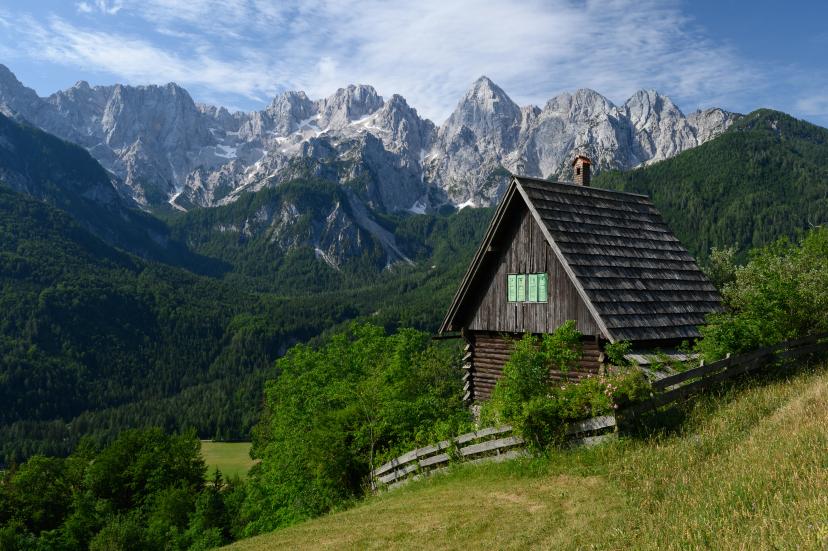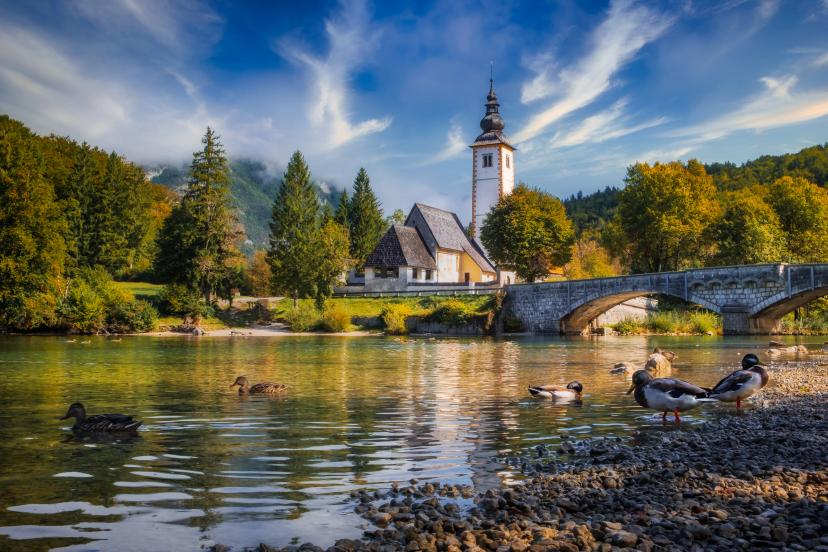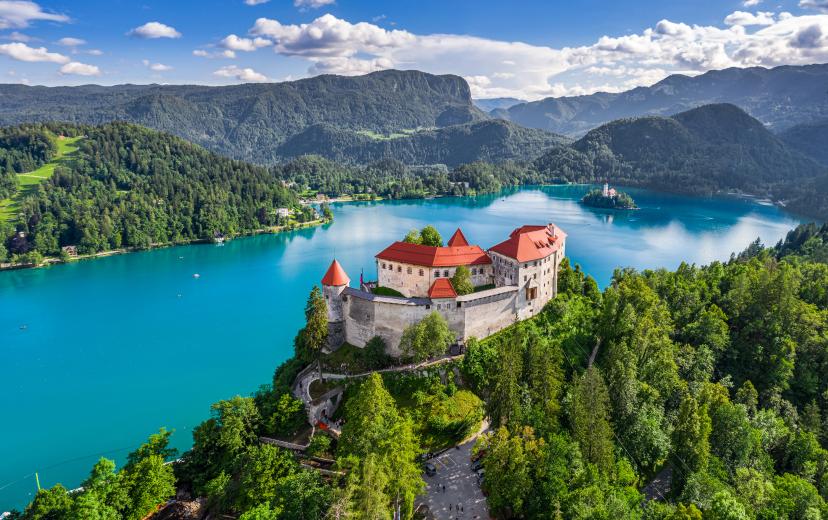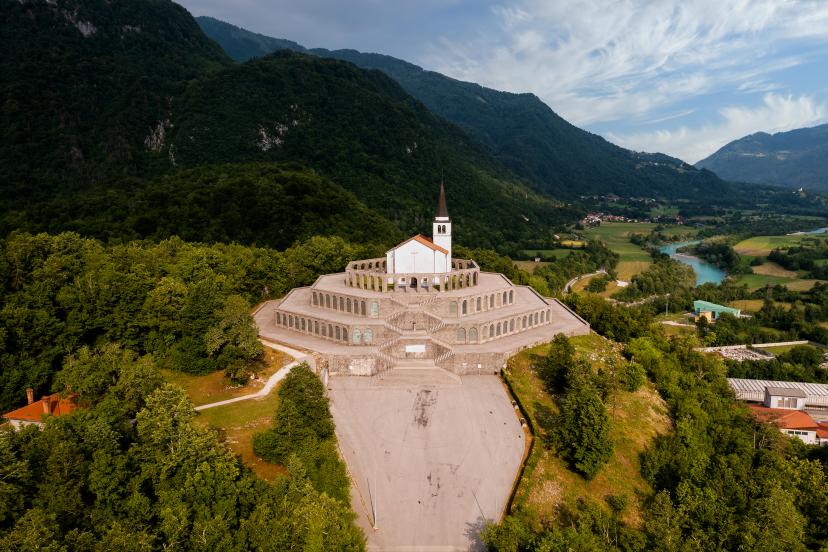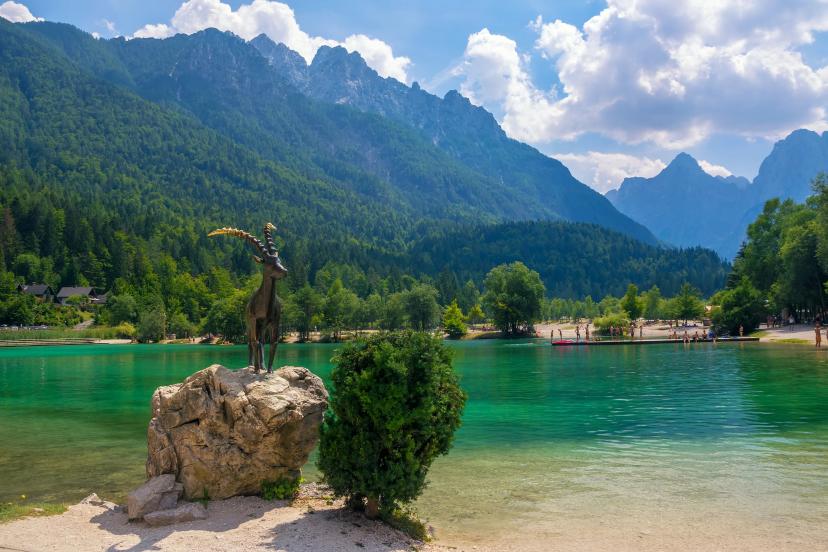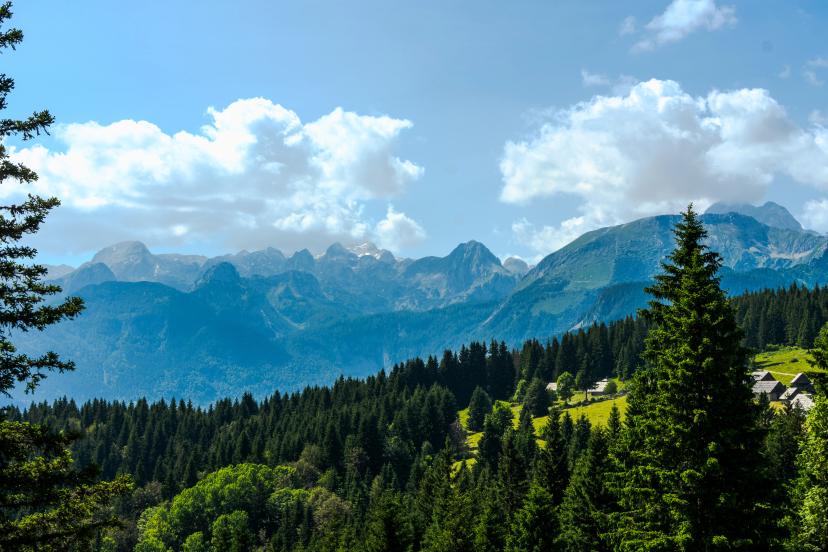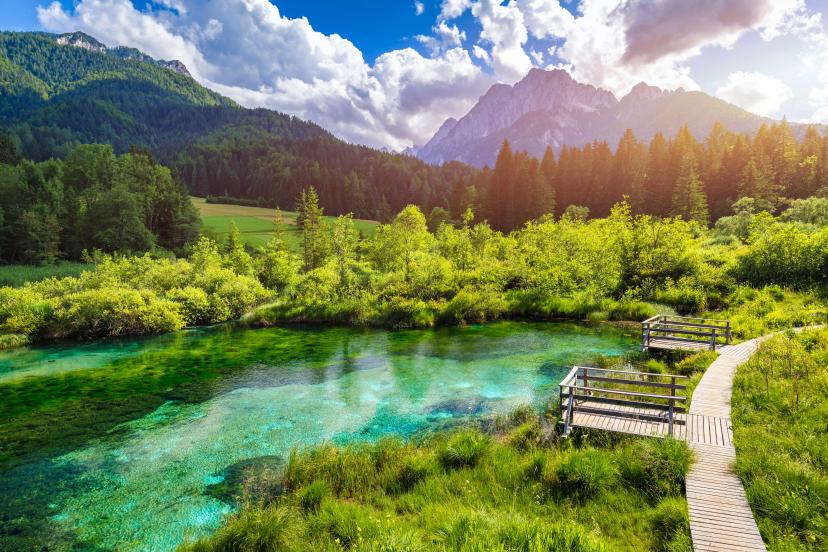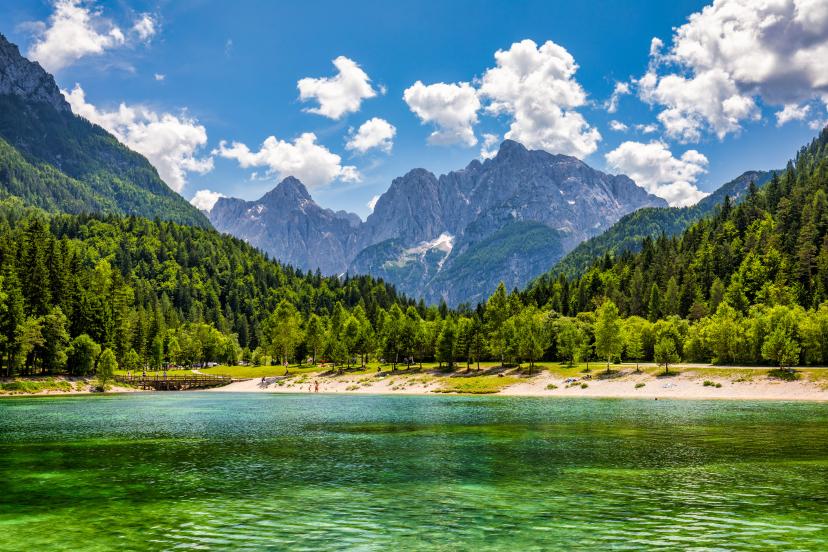Må-se steder i Slovenia
Den ultimate sightseeinglisten for Slovenia: nasjonalparker, vinland, Adriaterkysten og mer. Oppdag de beste stedene å se etter region.
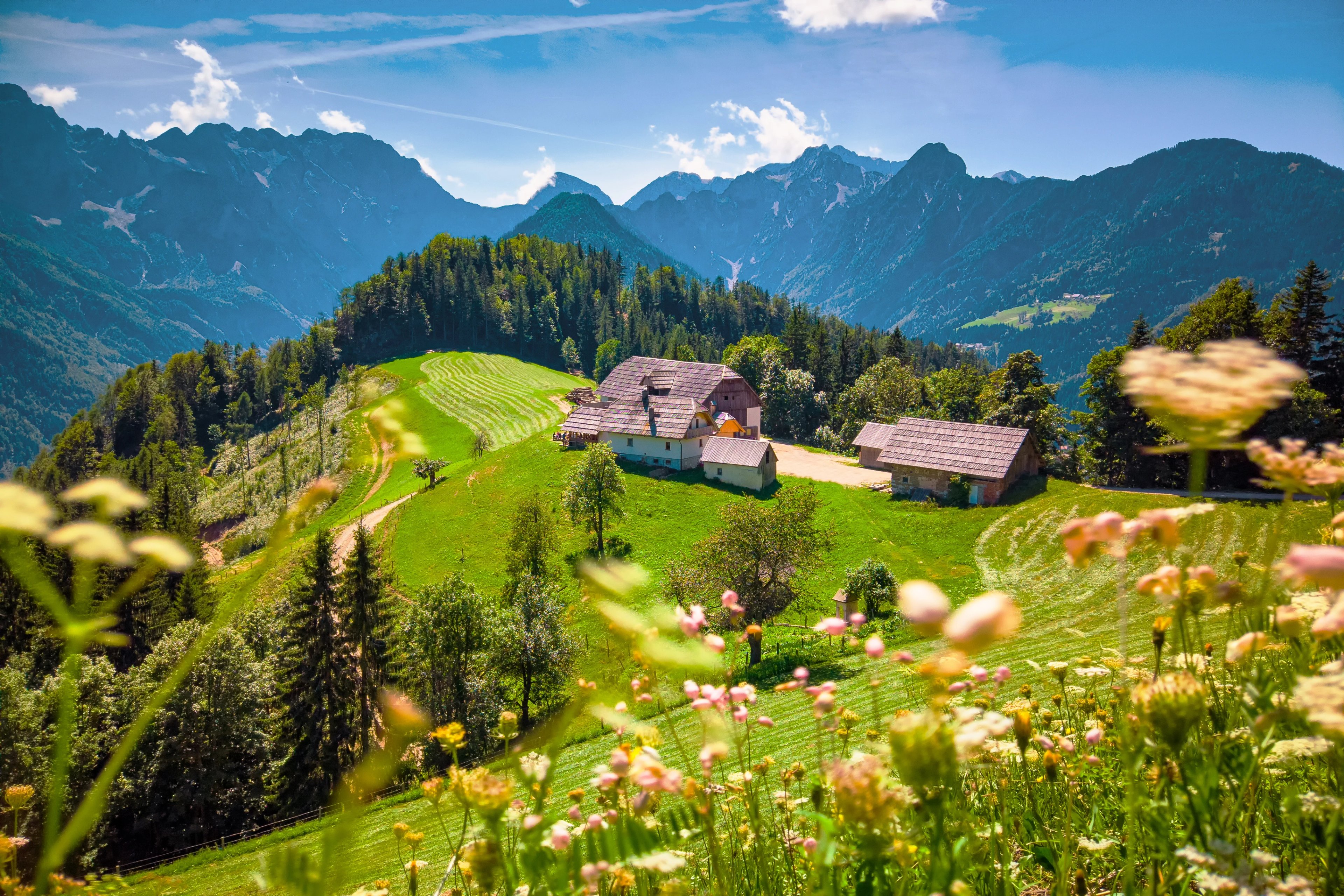
Slovenia er kanskje liten, men den tilbyr en av Europas mest varierte blandinger av landskap og kulturarv.
I ett land finner du alpine topper som når nesten 3000 m, smaragdgrønne elver, urørte skoger, romerske ruiner, venetianske byer, og huler som strekker seg kilometer under jorden.

Vi har satt sammen en Slovenia bucketliste over steder å se, delt opp etter region. Så, hva bør være på den?
Alpene & Julian Alpene i Slovenia
I nord avdekker Slovenia sin dramatiske alpine side. Tårnende topper nær 3 000 m, krystallklare innsjøer og dype daler definerer denne regionen, hvor Julian Alpene og Triglav nasjonalpark skaper et landskap av slående kontraster.
Her finner syklister legendariske fjellpass, smaragdgrønne elver og klassiske alpine landsbyer—en uforglemmelig bakgrunn for turer gjennom noen av Europas mest imponerende landskap.
Vil du oppleve det på nært hold? Vår Alper til Adriaterhavet-tur, Sloveniens Ride of the Champions, og Julian Alpene Sykkelferie viser frem det aller beste av denne spektakulære fjellregionen.
Karst & Middelhavsområdet i Slovenia
I sørvest tar sykkelferier i Slovenia en middelhavssmak. Karstplatået er kjent for sine huler, underjordiske elver og rødvinsvinmarker, mens Adriaterhavskysten gjenspeiler århundrer med venetiansk innflytelse. Legg til solfylt vær, terrasserte åser og historiske byer, og denne regionen viser en helt annen side av Slovenia. Se regionen under vår signatur sykkeltur fra Alpene til Adriaterhavet.
Sentral-Slovenia
Sentral-Slovenia blander kulturelle høydepunkter med enkel tilgang til naturen. Ljubljana, med sine kafeer ved elvebredden og slottutsikter, er et perfekt utgangspunkt for å utforske på sykkel. Nærliggende middelalderbyer, skogkledde platåer og kirker på høyder gir variasjon, noe som gjør denne regionen ideell for sykkelferier i Slovenia som balanserer urban oppdagelse med landsbytur.
Utforsk regionen på vår tur Sykkelferier på vei eller Hidden Hills sykkeltur hvis du foretrekker stille fjellbeiter og landsbyer.
Karawanks
Karawanks-fjellkjeden strekker seg 120 kilometer langs grensen til Østerrike, og danner en naturlig skillelinje mellom Sentral-Europa og Balkan. Toppene reiser seg over 2 000 meter, mens alpine daler, huler og høye beitemarker former det dramatiske landskapet.
En gang en bevoktet grense, er det i dag preget av tradisjonelt sauehold og friluftsliv — og de lange, stille veiene gjør det til et av de beste områdene for sykling i Slovenia.
Klar for å utforske det på sykkel? Vi har akkurat den turen for deg!
Sørlige Slovenia
Sørlige Slovenia er preget av store skoger, inkludert en av de største urørt skogområdene i Europa. Kočevski gozd alene dekker 500 kvadratkilometer og huser brunbjørner, ulver og gauper. Under den kalde krigen var store områder her stengt militære soner, noe som bidro til å bevare villmarken.
I dag er det en region hvor sykkelferier i Slovenia, spesielt for MTB-ryttere, får en villere side, med ville stier gjennom dype skoger og fokus på urørt natur.
Få pulsen opp i de urørte skogområdene på våre Single Trails MTB-ferier.
Over Grensen: Italia & Kroatia
Mange sykkelferier i Slovenia strekker seg sømløst inn i nærliggende Italia og Kroatia, og tilfører enda mer variasjon til turen. I Italia kan syklister takle Dolomittene, et UNESCOs verdensarvsted hvis legendariske pass har formet Giro d’Italia. I Kroatia tilbyr den istriske halvøya romersk arv, landsbyer på høyder, og trøflerike skoger.
For de som ønsker å oppleve alt, arrangerer vi reiser på tvers av flere land som viser det beste av regionen. Alternativene inkluderer Ultimate Cycling Across Slovenia & Croatia, Legendary Dolomites and Slovenia Road Challenge, og Road Cycling Slovenia, Italia & Kroatia-turen—hver av dem kombinerer uforglemmelige landskap, ikoniske klatringer, og de rike kulturene i tre naboland.
Planlegg din sykkelferie i Slovenia
Føler du deg inspirert av Sloveniens landskap? Bla gjennom vårt fullstendige utvalg av sykkelturer i Slovenia eller ta kontakt for å planlegge din egen tur.

Lokale eksperter
Våre profesjonelle sykkelguider kjenner det lokale terrenget og er opplært til å gjøre denne enestående muligheten både trygg og hyggelig.

Uten problemer
Vi tar oss av reiseruter, innkvartering og alt annet du foretrekker å slippe å ta deg av, slik at du kan nyte en bekymringsfri ferie.

Fullstendig tilpasningsdyktig
Fleksibilitet er vårt mellomnavn - enten du vil ha mer eller mindre, eller bare noe utenom det vanlige, så får vi det til å skje.

Bestill med tillit
Vi er et finansielt beskyttet selskap, med full garanti og forsikring, slik at pengene dine er trygge og du kan reise trygt.

Uslåelig støtte
Vår døgnåpne kundestøtte er der vi viser vår lidenskap, og gir deg en bedre opplevelse ved å gjøre ditt velvære til vår høyeste prioritet.
.jpg&w=3840&q=75)

